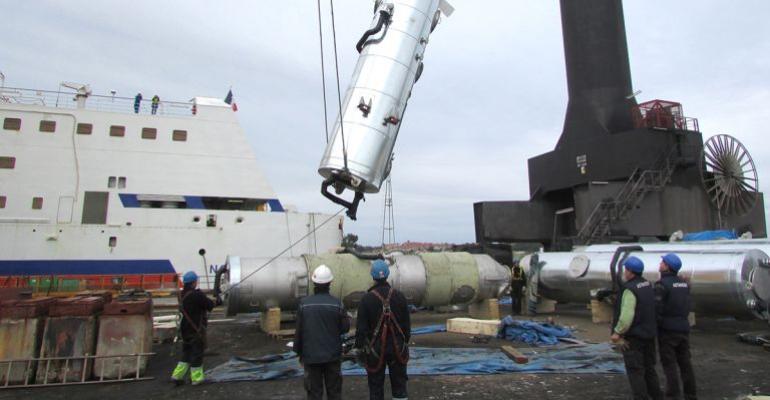Reacting to the drop in crude oil prices, bunker prices have declined sharply over the weekend. Singapore, the world’s largest bunkering port, saw price indications of VLSFO at $347 per metric tonne (pmt) on Tuesday, while the 3.5% high sulphur 380 cst grade price was at $227.50 pmt, putting the price spread at $119.50, according to Ship & Bunker data.
The price spread has been narrowing compared to $139 at the start of this month and $367.50 at the start of this year on 1 January 2020.
“The lower price spread for VLSFO means that ship operators will take a longer time to recover the investment cost of scrubbers and it also reduces the charter rate premium for scrubber-fitted ships,” commented container shipping analyst Alphaliner.
With the rapid spread of the coronavirus and restrictions on travel and transport on a global scale, oil demand is expected to contract in 2020 for the first time since the 2009 financial crisis, according to the International Energy Agency (IEA), pointing to anticipated low crude and bunker prices.
“Oil demand growth could contract, or be broadly flat in 2020. This largely reflects the impact from the coronavirus on travel and transport fuel demand,” S&P Global Ratings said. “This is certainly the case with China, which had been a key source of anticipated demand growth, but also globally.”
Since the implementation of IMO 2020, operators see two main options to comply with the global regulation: switch to burning compliant 0.5% sulphur content fuel or continue using HSFO with scrubbers installed to bring down the sulphur content of the fuel.
Operators who have chosen to install scrubbers on their ships are betting on a wide price spread between VLSFO and HSFO in order to shorten the payback time of scrubber cost, which can be a million dollars or more per ship.
Robert Hvide Macleod, chief executive of Frontline Management, had reportedly said in December 2019 that scrubbers costing the company between $2-4m per ship would need a payback on the investment over nine to 18 months. That was based on price difference of about $285 between HSFO and VLSFO.
Adrian Tolson, director at BLUE Insight, noted that scrubbers are still considered a viable option now despite the narrower spread. Retrofitting a scrubber on a 18,000-teu containership, for instance, had a payback of 1.5 years based on January price spread, and at today’s prices it could be 2.5 years, Tolson said, adding that there is still commercial sense especially for large-sized ships.
Apart from the issue of price spreads, the use of scrubbers has also been surrounded by some doubts in particular over the use of open-loop scrubbers as some countries and regions have banned the discharge of wash water in territorial waters from the open-loop system.
In addition, the coronavirus has disrupted normal operations at Chinese shipyards, leading to lengthier time needed to complete the retrofitting of scrubbers on the vessels.
Copyright © 2024. All rights reserved. Seatrade, a trading name of Informa Markets (UK) Limited.
Add Seatrade Maritime News to your Google News feed.  |

